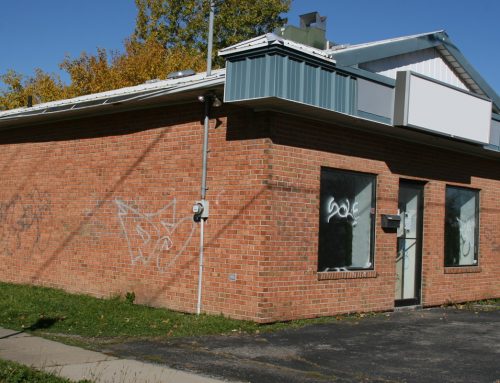The gap between the rich and the poor: This gap is widening in Niagara, as in all parts of Canada. According to the National Council of Welfare (2006), for every $1 earned by the poorest 10% of families with children, the richest 10% of families with children earned $14.48. The Council report stated that even after the impact of government transfer payments and income taxes, the poorest 20% of the population in Canada had only 5% of the income, while the richest 20% had 43.7% of the income. An average 2 parent family needs an additional $9,400 just to come up to the poverty line; lone parent families need $9,600
There are higher poverty rates for women, immigrants, children, lone-parent families and the Aboriginal population. This Table was prepared by the Niagara Poverty Report (2006):
Table 9.1 Comparison of Average Incomes and Poverty Rates for Men and Woman in Canada
| Women Average Income ($) | Women % Living Below LICO | Men Average Income | Men % Living Below LICO | |
| All Canadians | $24,400 | 17.1% | $39,300 | 14.7% |
| Single parents | 48.9% | 20.0% | ||
| Aboriginal women | $12,300 | 44.0% | $15,500 – | 20.0% |
| New Immigrant | $16,700 | 35.0% | $38,000 | 35.0% |
| Visible minority | $20,000 | 29.0% | $29,000 | 28.0% |
| People with disabilities | $17,200 | 26.0% | $26,900 | 20.0% |
Source: http://www.regional.niagara.on.ca/living/saeo/reports/pdf/PovertyReport.pdf p. 12
Source: http://www.criaw-icref.ca
Dental health and poverty:
Dental health is critical for general health. The gap between the rich and the poor is particularly pronounced in the area of access to preventive dental health and dental treatments. Several regional initiatives by Community Services and Niagara Region Public Health have been addressing services for babies and children. The Children in Need of Treatment Program (CINTP), dental clinics and Early Years strategies have developed to better address dental needs for babies and children. However, dental care and treatment strategies and affordability for all ages and for those who have a low income or are homeless need to be strengthened. Employability, self-esteem and health are all connected to good dental health and appearance.
Source: Dental Report, Niagara Region Community Services www.niagararegion.ca
Different groups, income and poverty:
Poverty particularly affects lone parent families, the Aboriginal populations, persons with mental and physical disabilities, women, immigrants, some seniors and singles without employment. The new Census data, 2011 will shed more light on how things may have changed, for better of worse for these specialized groups. Some information was covered in the Work and Employment sector part of this report. Poverty has a real face and a real and personal story behind the statistics and numbers.
Children and poverty: Niagara’s rate of poverty for those less than 18 years of age was 9.8% in 2001 and went up to 16.5% in 2005 and down to 6.5% in 2006.
Ontario Deprivation Index: This index determines the number and percentage of Ontario families and children with access to an acceptable standard of living. The measure identifies that a family is living in poverty if it is not able to afford two or more items out of a list of ten. In the first year of using this measure, 2009, 12.5 per cent of Ontario children were lacking two or more items.[1]174
Some of the items on the Deprivation Index are:
- Do you eat fresh fruit and vegetables every day?
- Are you able to get dental care if needed?
- Do you eat meat, fish or a vegetarian equivalent at least every other day?
- Do you have appropriate clothes for job interviews?
- Are you able to have friends or family over for a meal at least once a month?
- Is your house or apartment free of pests, such as cockroaches?
- Are you able to buy some small gifts for family or friends at least once a year?
- Are you able to get around your community, either by having a car or by taking the bus or equivalent mode of transportation?
- Are you able to replace or repair broken or damaged appliances such as a vacuum or a toaster?
- Do you have a hobby or leisure activity?
Source: http://ontario.ca/mcys/en/2009/12/ontario-deprivation-index.html
Children in poverty or at risk of poverty are more likely to experience a range of negative outcomes: low academic achievement, health problems, early pregnancy, homelessness, lower high school graduation rates and poor employment outcomes.” Source: Montgomery County (Maryland), Family and Children First Council (2007). On Community, Outcomes, Indicators and Strategies. Progress Report. p56.
The portion of Niagara’s population that are children/youth (aged 0-19) is less than that of Ontario and has declined since the last census. In 2001, Niagara residents aged 0-19 comprised 25 per cent of the population compared to 26 per cent of Ontario. In 2006, 24 per cent of Niagara’s population was between the ages of 0-19 compared to 25 per cent in Ontario. (Statistics Canada (2001) (2006). Census Data, Community Profiles.)
The portion of children living in LICO households in Niagara dropped slightly from 15.6 per cent in 2001 to 15 per cent in 2006. (Before tax LICO was used to allow comparison between 2001 and 2006 data.) This portion is less than the provincial average of 18 per cent. However, the depth of poverty among Niagara’s children is greater than that of Ontario’s children. Comparatively speaking, a larger number of Niagara’s children live in families who rely on social assistance. (Early Years Niagara, 2009). When compared to the rest of Ontario, Niagara has more children, aged 0-6, in families receiving Ontario Works, 5.1 per cent and 5.6 per cent respectively. This means that a monthly average of 6,222 of Niagara’s children live in families receiving OW. About 50 per cent of these children are between the ages of 0-6, 30 per cent between the ages of 7-12 and 20 per cent between the ages of 13-17. (Niagara Region Community Services (Jan-April 2010). Benefit Unit Summary Report.) As well, Niagara children are more than twice as likely to live in families receiving Ontario Disability Support Program benefits, 3.0 per cent and 1.4 per cent respectively. (Niagara Best Start Network, 2008). This represents an average of 2,524 children each month the majority of who are between the ages of 13-17 (42 per cent), followed by 7-12 year olds (32 per cent) and lastly 0-6 year olds (26 per cent) (Niagara Region Community Services, 2010 (year to date).
Types of families and poverty: Two-parent families with children represent the most common family type in Canada/ Niagara. While they have the lowest poverty rate of all family types with children, their large numbers live approximately $9,900 below the poverty line. In 2005, in Niagara the median income for all families was $60,600 and for couples with families was $67,300, while the median income for lone-parent families was $30,300. Source: National Council on Welfare, 2006.
Source: FCM, 2006
Women and poverty:
The feminization of poverty has been identified as a concern because women are at higher risk of deep and sustained poverty. In 2007, women working full-time throughout the year earned 71 per cent of the average wages earned by men and were more likely to be in low wage work. More single, working age women (35.1 %) compared with men (29.7%) lived in poverty and had incomes that were on average 58% to 55% of the LICO. In 2008, 35% of all jobs for women were classified as non-standard; either part-time, temporary, contract or self-employment work. In 2008, 4 out of 10 women, compared to 3 out of 10 men, were in non-standard work. Women tend to be over-represented in unpredictable service sector work, reinforcing not only the “sex-segmented” but also the “dual labor market”[1] which traps vulnerable groups to compete at the lower end of the labour market. Source: Federation of Canadian Municipalities (FCM), 2010; and Building a New Legacy: Increasing Prosperity for Niagara Residents by Improving the Quality of Neighbourhood Life Report, Niagara Region, 2011.
The portion of female headed households with children under 12 years of age living in poverty is of concern. The risk of poverty is 4 times higher for children in female lone parent families than for children in two parent families. Among the working poor, 23.6% of lone female-headed households compared to 10.8% of lone male-headed households lived in poverty. Women and female-led single parent families experience the greatest depth of poverty. In 2003, poverty for unattached women was 17.1% compared to 14.7% for unattached men and single-parent women poverty rates were 48.9% compared to 20.0% for male single parents. In 2005, in Canada, the average earnings of women were 61% that of men, regardless of the occupation. Education helps, but does not reduce the gender gap in wages. Source: Statistics Canada, 2006.
Female lead, single-parent families continue to be the highest group affected by poverty. According to the National Council of Welfare (2006), the average female lone-parent family lives $9,400 below the poverty line and single-parent mothers account for 80% or more of all single-parent households and more than 90% of poor single-parent families. http://www.regional.niagara.on.ca/living/saeo/reports/pdf/PovertyReport.pdf
Across Canada, poverty rates for female lone parent families dropped to a record low from 311,000 families in 1996 to 135,000 families in 2007. A decreasing trend in Niagara mirrors the national trend. In Niagara, 20,200 families or 16.37 % are headed by lone parents. Of these, approximately 16,205, or 80 % are female-headed. Although fewer of these households were below LICO, the incidence remains alarmingly high even when compared with the overall portion of households living in poverty.
Source: From the Federation of Canadian Municipalities (FCM), 2010 and The New Legacy Report, 2011.
Table 9.8
| Year | All LICO Households | Lone Female Headed LICO Households | |
| Canada | 2001 | 16.2% | 48% |
| 2006 | 15.3% | 42.5% | |
| Niagara | 2001 | 12.7% | 45.7% |
| 2006 | 12% | 38% |
The gender gap in income across Niagara:
The following figures map the full-time average incomes for males and females in different parts of St. Catharines -Niagara CMA, according to the 2006 Census. Males’ average income was $56,208 and females’ average income was $38,408. The income levels for both genders show that different parts of the region have lower and higher income levels, but this different for males and females.
Source: Statistics Canada, 2006, Maps prepared by Brock University, Map Library, 2010.
The Aboriginal population: In 2005, in Niagara, 6,930 identified themselves as Aboriginal. The average earnings for Aboriginal residents working in Niagara full-time for a year was $35,866, well below the Niagara average of $42,126 and the Ontario average of $47,299.
Seniors and poverty: Poverty for those over 65 years of age in Canada was 29% in 1976 and only 4.8% in 2007. The real numbers are increasing with the aging of the population. Seniors below the LICO poverty line was estimated at 9.1% in 2006. Source: FCM, 2010.
Newcomers, immigrants and poverty: In 2008, 2,443 newcomers entered Canada at the Fort Erie Peace Bridge, with approximately 428 children under the age of 10. It is estimated that 1 in 2 immigrant children live in poverty. Those immigrants living in Canada under 5 years, while they work on settlement, experience low incomes – two to four times lower than that of non-immigrant households. In Niagara, in 2006 unemployment for immigrants was 9.5% compared to 6.1% for the general population. In 2006, unemployed immigrants made up 125 of the Niagara social assistance caseload. Source: Building a New Legacy Report, page 46.
People with Disabilities: In Ontario, 21% of persons with disabilities live in poverty. Societal stigma often limits access to employment for those with disabilities. About one in five people with a disability work for low pay. Periodic experiences with ill health can be a barrier to education and to sustainable employment. These factors mean that people with disabilities are three times more likely to be poor than the general population and more likely to require social assistance. Disability-related expenses, such as the cost of medication, services, and other aides are not factored into the calculation of LICO.
People experiencing mental illness: Poverty and mental illness are often strongly associated. People experiencing mental illness are often living in poverty and people living in poverty often suffer from a mental illness. Stigma and discrimination against people with a mental illness can create barriers to employment and education and create lower income levels that in turn affect having adequate housing and other basic needs being met. Ultimately, many of these factors lead to sustained poverty and even homelessness, in some cases.
Those living in poverty cannot access adequate resources, including transportation, which often creates high levels of stress that contributes to depression, anxiety, and other mental illnesses. The strain for families living in poverty can also affect the mental health of children living in those conditions. According to the Canadian Mental Health Association, one in five Ontarians within a given year experience mental illness. In Ontario, 275,317 people with a serious mental illness are unemployed. Approximately, 35% of ODSP clients have a mental illness.
Sources: Building a New Legacy Report, Community Services, 2011
Council of Canadians with Disabilities (2009). As a Matter of Fact: Poverty and Disability in Canada. Available at: http://www.ccdonline.ca/en/socialpolicy/poverty-citizenship/poverty-disability-canada
Canadian Mental Health Association, Ontario (2007). Backgrounder: Poverty and Mental Illness. Available at: www.ontario.cmha.ca
Canadian Mental Health Association, Ontario (2008). Policy Position: Strategies for Reducing Poverty in Ontario. Available at: www.ontario.cmha.ca












